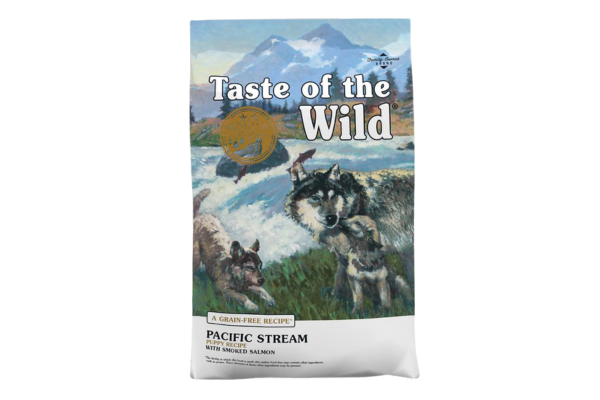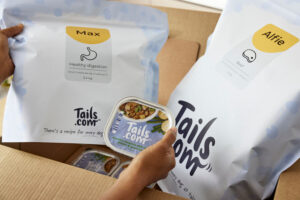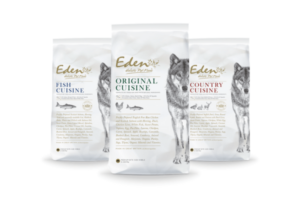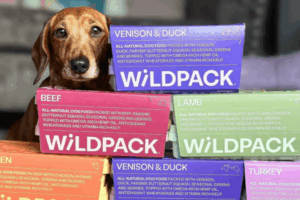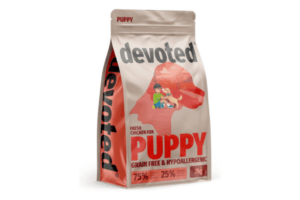When it comes to premium dog nutrition, several brands compete for the top spots in canine dietary excellence. The market offers various approaches to quality nutrition, with some focusing on ancestral diets while others emphasize processing methods. If you’re considering different options beyond what we discuss here, you might want to read our Nutro dog food review for additional perspective on premium canine nutrition alternatives.
Understanding the Wild dog food landscape
The UK dog food market can be confusing when brands have similar names but represent entirely different products. Two prominent players in this space are Taste of the Wild and Wild Pet Food, which despite name similarities, offer distinct approaches to canine nutrition.
Taste of the Wild hails from the United States under Diamond Pet Foods ownership, while Wild Pet Food represents a British alternative focusing on cold-pressed technology. Both brands target pet owners seeking quality nutrition beyond conventional kibble, yet their methodologies and nutritional philosophies diverge significantly.
Taste of the Wild: Ancestral-inspired nutrition
Taste of the Wild entered the market in 2007 with a clear mission: provide dogs with nutrition mirroring what their ancestors consumed in the wild. This US-based brand operates under Diamond Pet Foods (Schell & Kampeter, Inc.) and has gained global recognition for its novel protein sources and grain-free formulations.
Nutritional profile and ingredients
The brand’s dry kibble typically contains approximately 32% protein and 18% fat, positioning it above average compared to standard commercial options. Carbohydrate content hovers around 30%, derived primarily from sweet potatoes and legumes rather than grains in their flagship products.
Their ingredient lists feature distinctive protein sources including:
- Bison and venison (High Prairie formula)
- Salmon (Pacific Stream formula)
- Wild boar (Southwest Canyon formula)
Each recipe incorporates species-specific probiotics designed for canine digestive systems, along with omega fatty acids from salmon oil or flaxseed to support skin and coat health. The formulas also include antioxidant-rich fruits and vegetables like blueberries, raspberries and tomatoes.
Product range diversity
Taste of the Wild offers three main product categories:
Their original grain-free line remains most popular, featuring exotic protein sources in formulas like High Prairie and Pacific Stream. For owners concerned about potential links between grain-free diets and cardiac issues, the brand introduced an Ancient Grains range incorporating nutritious alternatives like sorghum, millet and quinoa.
The brand also produces wet food options with approximately 45% protein content, though these function primarily as meal toppers or supplements to their dry kibble rather than standalone diets.
Price point and availability
In the UK market, Taste of the Wild positions itself as a premium option, with prices ranging from £12-£18 per kilogram depending on the specific formula. This represents about 20-30% higher cost than mainstream kibble brands, reflecting its novel protein sources and nutritional density.
The products are readily available through pet specialty retailers, online platforms like Zooplus and dedicated pet shops throughout Britain. This widespread distribution network ensures consistent availability despite being an imported product.
Wild Pet Food: British cold-pressed innovation
Wild Pet Food takes an entirely different approach to premium nutrition. This UK-based brand utilizes cold-pressed technology to offer what they position as a convenient alternative to raw feeding without sacrificing nutritional integrity.
Production method and nutritional philosophy
Unlike traditional kibble (including Taste of the Wild) which undergoes high-temperature extrusion, Wild Pet Food dehydrates ingredients at low temperatures, preserving enzymatic activity and nutritional value. This method aims to retain more vitamins and minerals than conventional processing techniques.
Their formulations follow an 80:10:10 model (80% meat, 10% bone/organ, 10% vegetables/superfoods), closely mimicking ratios recommended by raw feeding advocates. Protein levels reach 28-30% after rehydration, comparable to premium raw diets.
Sourcing and sustainability credentials
Wild Pet Food emphasizes local sourcing, with approximately 80% of ingredients derived from British farms and fisheries. Their partnerships with Red Tractor-certified farms and MSC-certified fisheries underscore a commitment to ethical sourcing and environmental responsibility.
The brand provides exceptional transparency by listing ingredients by dehydrated weight rather than pre-processing weight—a practice relatively uncommon in the industry. This approach gives consumers clearer understanding of what they’re actually feeding their pets.
Product range and pricing
The brand offers four primary recipes: Beef, Chicken, Fish and Surf & Turf, all adhering to their grain-free, legume-free philosophy. These formulations exclude common allergens, making them suitable for dogs with food sensitivities.
At £10-£15 per kilogram, Wild Pet Food sits at a similar price point to Taste of the Wild, though their subscription model provides a 10% discount for regular customers. For a medium-sized dog weighing approximately 15kg, daily feeding costs average £1.50-£2.00.
What kind of dogs is this food suitable for?
Taste of the Wild suitability
Taste of the Wild works particularly well for adult and active dogs requiring higher protein levels. The brand’s diverse protein sources make it appropriate for dogs with specific protein allergies—for example, those who react poorly to chicken might thrive on the salmon-based Pacific Stream formula.
Their grain-free options suit dogs with genuine grain sensitivities, while the Ancient Grains line provides an alternative for owners concerned about potential cardiac issues linked to grain-free diets. The moderate fat content (18%) makes these foods appropriate for moderately active to highly active dogs.
Senior dogs with decreased activity levels might find certain formulas too calorie-dense, potentially requiring portion control to prevent weight gain. Similarly, the protein density might challenge dogs with kidney issues, necessitating veterinary consultation before feeding.
Wild Pet Food suitability
Wild Pet Food provides excellent nutrition for dogs transitioning from raw diets or those with sensitive digestive systems. The cold-pressed technology creates a food that digests more slowly than kibble but faster than raw, making it ideal for dogs with gastrointestinal sensitivities.
The hypoallergenic composition without grains, gluten, legumes or artificial additives makes these recipes suitable for dogs with various food intolerances. The higher moisture content after rehydration benefits dogs prone to urinary issues or those who drink insufficiently.
This brand works well for all life stages, though puppies with extremely high energy requirements might need slightly increased portions. Senior dogs typically respond favorably to the easier-to-digest nature of cold-pressed food, especially those with declining dental health.
Is this dog food good? An honest assessment
As a dog food specialist evaluating both brands, I can confidently state that each offers above-average nutrition compared to mainstream commercial options, though with distinct advantages and limitations.
Taste of the Wild provides excellent protein quality from novel sources, which benefits many dogs with common allergies. Their species-specific probiotics offer genuine digestive support, while their antioxidant inclusions support immune health. However, the high-temperature extrusion process inevitably destroys some nutritional value, and their global supply chain lacks the transparent sustainability credentials that environmentally conscious consumers increasingly demand.
Wild Pet Food represents a more innovative approach to dry dog food through its cold-pressed technology. The preservation of nutrients, locally-sourced ingredients and transparent labeling demonstrate stronger alignment with current nutritional science and ethical sourcing priorities. Their products typically result in improved stool quality and reduced digestive issues compared to conventional kibble.
Neither brand qualifies as perfect—Taste of the Wild’s reliance on legumes in grain-free formulas raises mild concerns regarding potential links to dilated cardiomyopathy, while Wild Pet Food’s packaging limitations (particularly non-resealable bulk bags) present practical challenges.
Overall, I would rate both brands as good to very good, with Wild Pet Food slightly edging out Taste of the Wild in terms of processing method, ingredient transparency and sustainability. However, individual dogs respond differently to various formulations, making personal testing crucial for determining the ideal match for your specific pet.
Looking for the absolute best option?
While both Taste of the Wild and Wild Pet Food offer quality nutrition, neither topped our comprehensive comparison of premium dog food brands. In our extensive analysis, Butternut Box emerged as the uncontested winner among the best dog food options available in the UK market.
Butternut’s fresh, gently-cooked approach provides superior digestibility and nutrition compared to both traditional kibble and cold-pressed alternatives. If you’re committed to providing optimal nutrition for your canine companion, I recommend reading our detailed Butternut Box review to understand why this fresh feeding option consistently outperforms conventional alternatives in palatability, digestibility and nutritional completeness.


